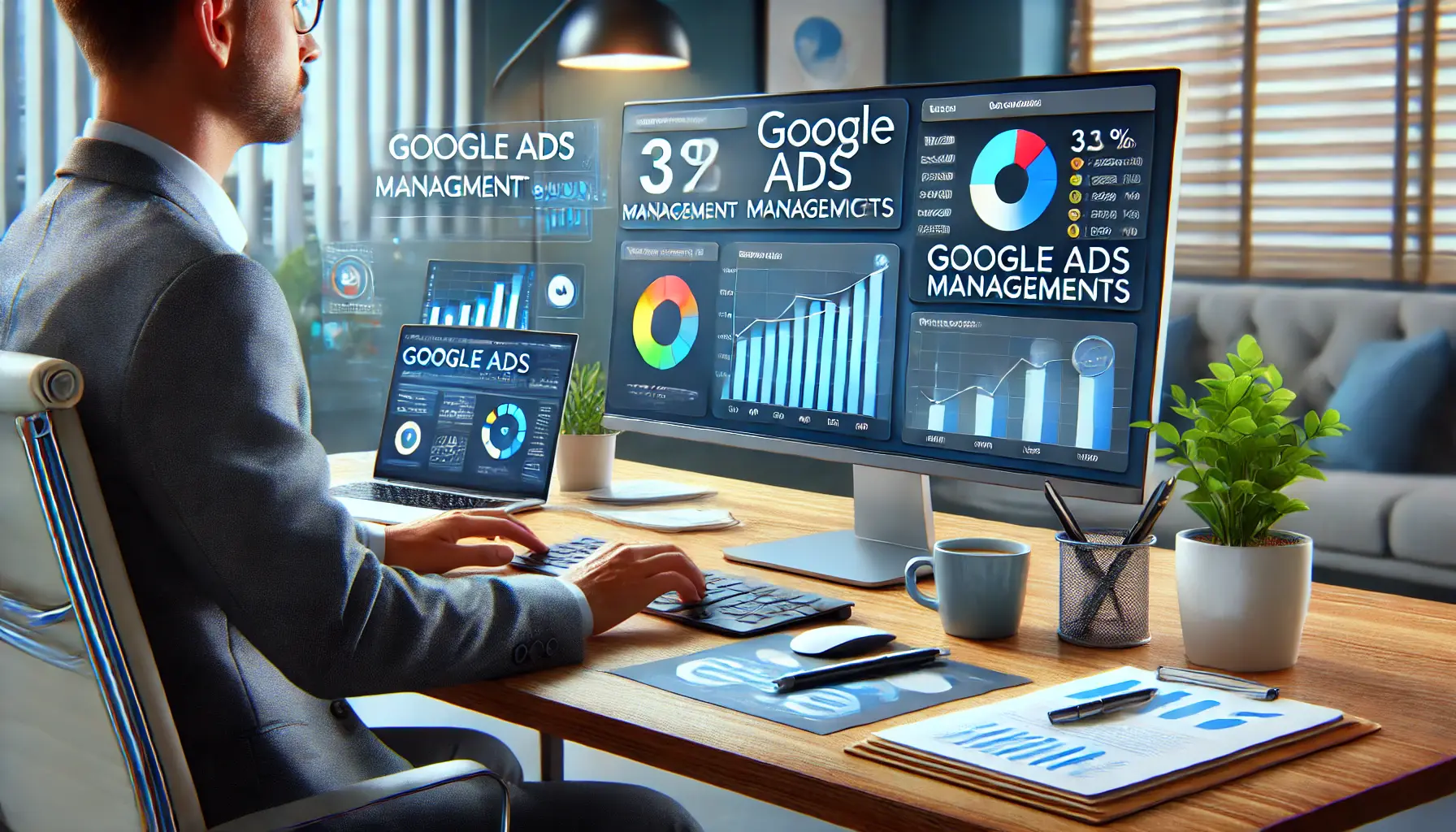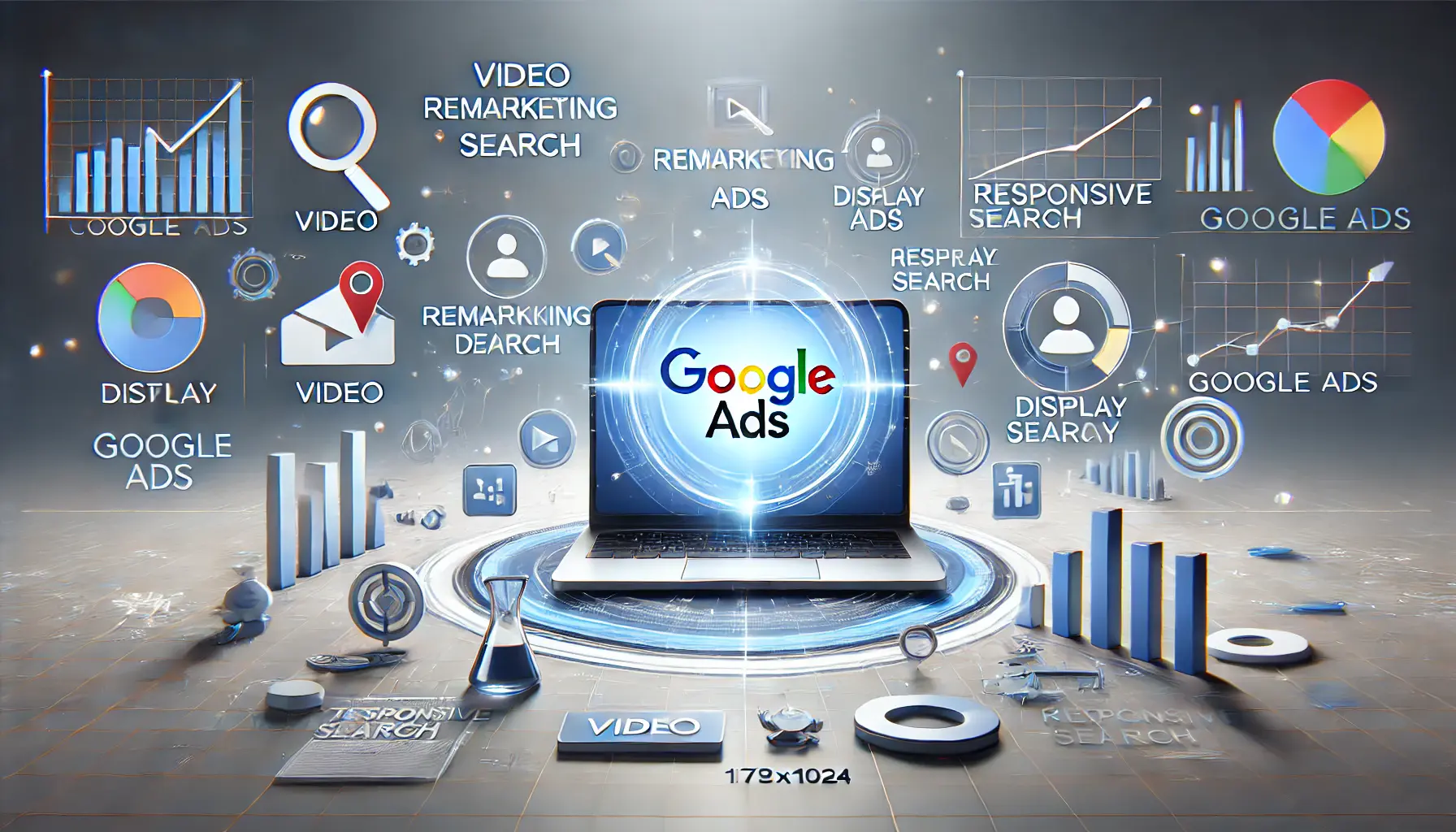Targeted campaigns have become a cornerstone in today’s competitive digital landscape, where businesses want to reach the highest level of visibility and effect.
Be it a small business or a large corporation, learning how to create and execute campaigns that best resonate with target audiences is essential to success.
With tools like Google AdsA digital advertising platform by Google for creating and managing online campaigns., marketers now have the ability to tailor campaigns with incredible precision, ensuring that every dollar spent brings measurable results.
But what does it really take to create an effective targeted campaign?
In this article, we will dive into actionable strategies and insights to help you develop campaigns that deliver the outcomes you need.
- Understanding the Basics of Targeted Campaigns
- Using Google Ads for Precise Targeting
- Crafting Effective Ad Creatives for Targeted Campaigns
- Optimizing Your Targeted Campaigns for Maximum Impact
- Adapting to Emerging Trends in Targeted Campaigns
- Mastering the Art of Targeted Campaigns: A Summary
- Frequently Asked Questions About Targeted Campaigns
Understanding the Basics of Targeted Campaigns
Before diving into advanced strategies, it’s essential to grasp the basics of targeted campaigns.
These campaigns are designed to reach specific groups of people based on their demographics, behaviors, interests, or locations.
By narrowing your audience, you increase the likelihood of engagement and conversions, making your advertising budget work smarter, not harder.

A visual representation of targeted campaigns, emphasizing audience segmentation and personalized ad strategies.
What Are Targeted Campaigns?
Targeted campaigns are a form of marketing that focuses on delivering personalized messages to specific audience segments.
Unlike general advertising, targeted campaigns rely on data-driven insights to identify and appeal to the preferences and needs of a defined group.
- Precision: They focus on delivering ads to people who are most likely to engage with your product or service.
- Relevance: By addressing the unique interests of the audience, targeted campaigns increase the likelihood of a positive response.
- Efficiency: These campaigns help reduce wasted ad spend by excluding irrelevant audiences.

A digital marketing workspace showcasing the impact of targeted campaigns on business success, with a focus on key performance metrics.
Why Targeted Campaigns Are Essential for Success
With the sheer volume of advertisements people see daily, standing out requires more than just creativity—it demands relevance.
Targeted campaigns ensure that your messaging aligns with what your audience wants, leading to better engagement and higher ROIReturn on Investment; a measure of the profitability of an investment..
- Higher Conversion Rates: Reaching the right audience increases the chances of turning views into actions.
- Cost-Effectiveness: Focusing on a niche audience minimizes spending on uninterested viewers.
- Improved Customer Relationships: Personalized campaigns show that you understand and value your customers.
Understanding the basics of targeted campaigns is the first step to unleashing their power.
In the following section, we will explore how Google Ads can help you achieve precision in targeting for your campaigns.
Targeted campaigns improve engagement and ROI by narrowing down specific audience groups through demographic, behavioral, and interest-based segmentation.
- Increased efficiency with budget allocation.
- Higher relevance for audience engagement.
- Enhanced conversion rates and customer satisfaction.
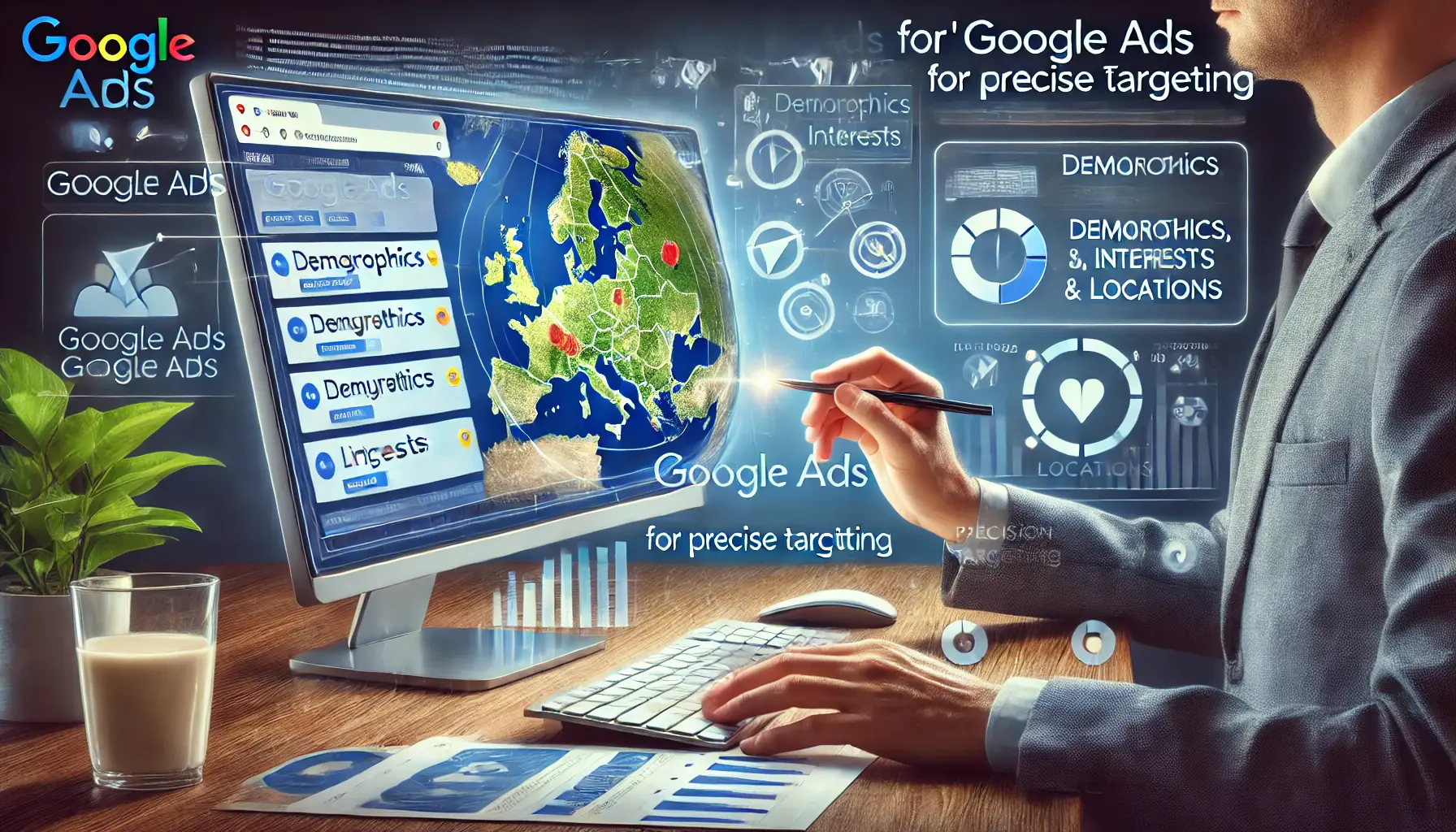
A digital marketing scene showing the Google Ads interface with targeting options for precise audience segmentation.
Using Google Ads for Precise Targeting
In the realm of digital marketing, precision is paramount.
Google Ads offers a suite of targeting options that allow you to reach your desired audience with remarkable accuracy.
By leveraging these tools, you can ensure that your targeted campaigns connect with the right people at the right time, maximizing your return on investment.
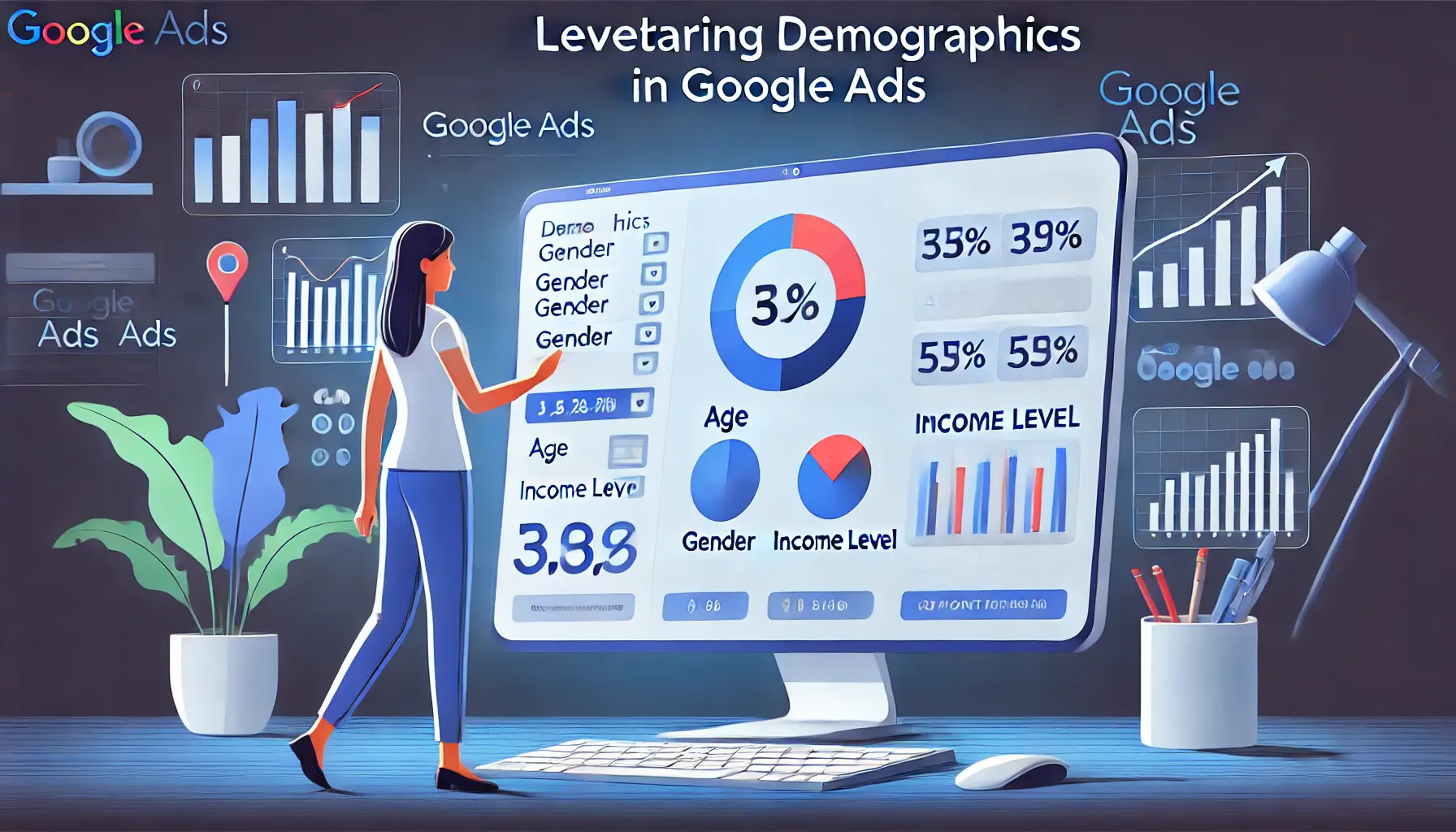
A scene showing a marketer leveraging demographic targeting in Google Ads to optimize campaign performance.
Leveraging Demographics in Google Ads
Demographic targeting helps you set up ad campaigns tailored to specific audience segments based on age, gender, parental status, and household income.
This ensures your message resonates with distinct groups of the population.
For example:
- Age and Gender: Create ads targeting specific age groups and genders to enhance relevance and engagement.
- Parental Status: Target parents or non-parents, depending on your product or service.
- Household Income: Focus on income brackets that align with your target market.
By refining your audience through demographic targeting, you can allocate your budget more effectively and increase the likelihood of conversions.

A visual representation of interest-based targeting, highlighting user behaviors and preferences in digital marketing campaigns.
Understanding Interest-Based Targeting
Interest-based targeting allows you to reach users based on their interests, habits, and behaviors.
Google Ads categorizes users into affinity and in-market audiencesUsers who are actively researching or comparing products and services, indicating purchase intent..
- Affinity Audiences: Reach users with a general interest in topics related to your business, such as sports enthusiasts or tech lovers.
- In-Market Audiences: Engage users actively searching for products or services like yours, indicating a higher intent to purchase.
Interest-based targeting allows you to connect with audiences more likely to engage with your ad, ultimately improving campaign performance.
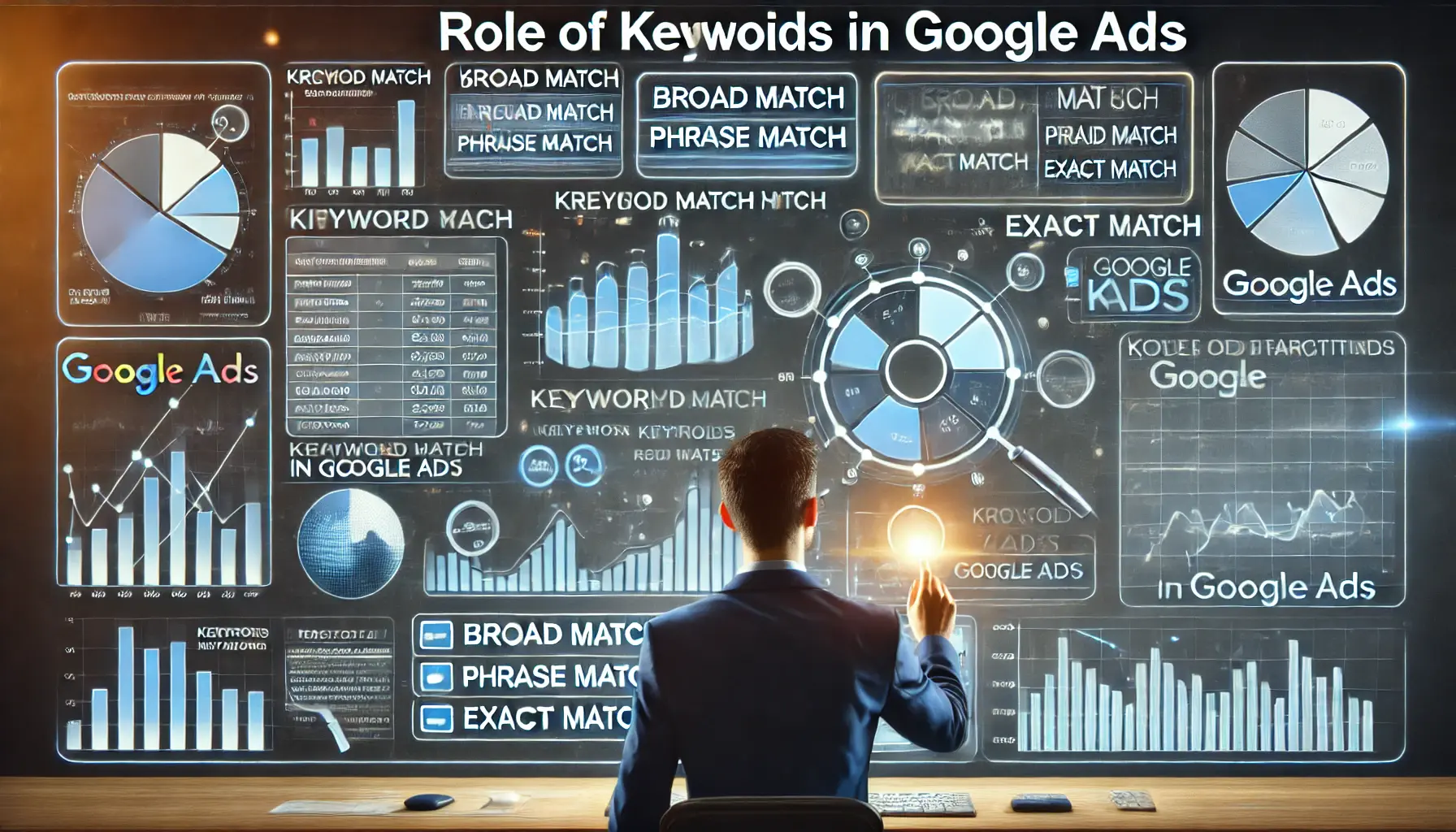
A visual representation of how keyword selection and match types influence targeting and optimization in Google Ads campaigns.
Role of Keywords in Google Ads
Keywords are the backbone of search advertising.
Choosing the right keywords ensures that your ads appear when users search for terms relevant to your business.
Here’s how to approach keyword selection:
- Broad Match: Capture a wide audience by allowing your ads to match searches containing variations of your keywords.
- Phrase Match: Show ads for searches containing the exact phrase or close variations.
- Exact Match: Target searches that match your exact keyword, providing precise control over who sees your ads.
Effective keyword management ensures your ads reach users actively seeking what you offer, enhancing the effectiveness of your targeted campaigns.

A visual representation of location targeting in Google Ads, emphasizing precision in selecting geographic areas for optimized campaigns.
How to Use Location Targeting Effectively
Location targeting allows you to focus your ads on geographic areas where your potential customers reside, ensuring your campaigns are relevant to users in specific locations.
- Country, Region, or City: Target wide or small areas based on your business scope.
- Radius Targeting: Define a radius around a location to target users within a specific distance.
- Location Exclusions: Exclude areas where your ads are less likely to perform well, optimizing your budget.
By using precise location targeting, your ads can reach the most relevant audiences, making your targeted campaigns more effective.
By fully leveraging the potential of Google Ads’ targeting options, you can create campaigns that are not only far-reaching but also deeply resonate with your intended audience.
Next, we will discuss how to create efficient ad creatives that align with your targeted campaign strategy.
Google Ads provides precision through tools like demographic, interest-based, and location targeting, ensuring campaigns reach the most relevant audience effectively.
- Tailor ads by demographics like age and income.
- Leverage affinity and in-market audiences.
- Use location targeting to focus on high-potential regions.
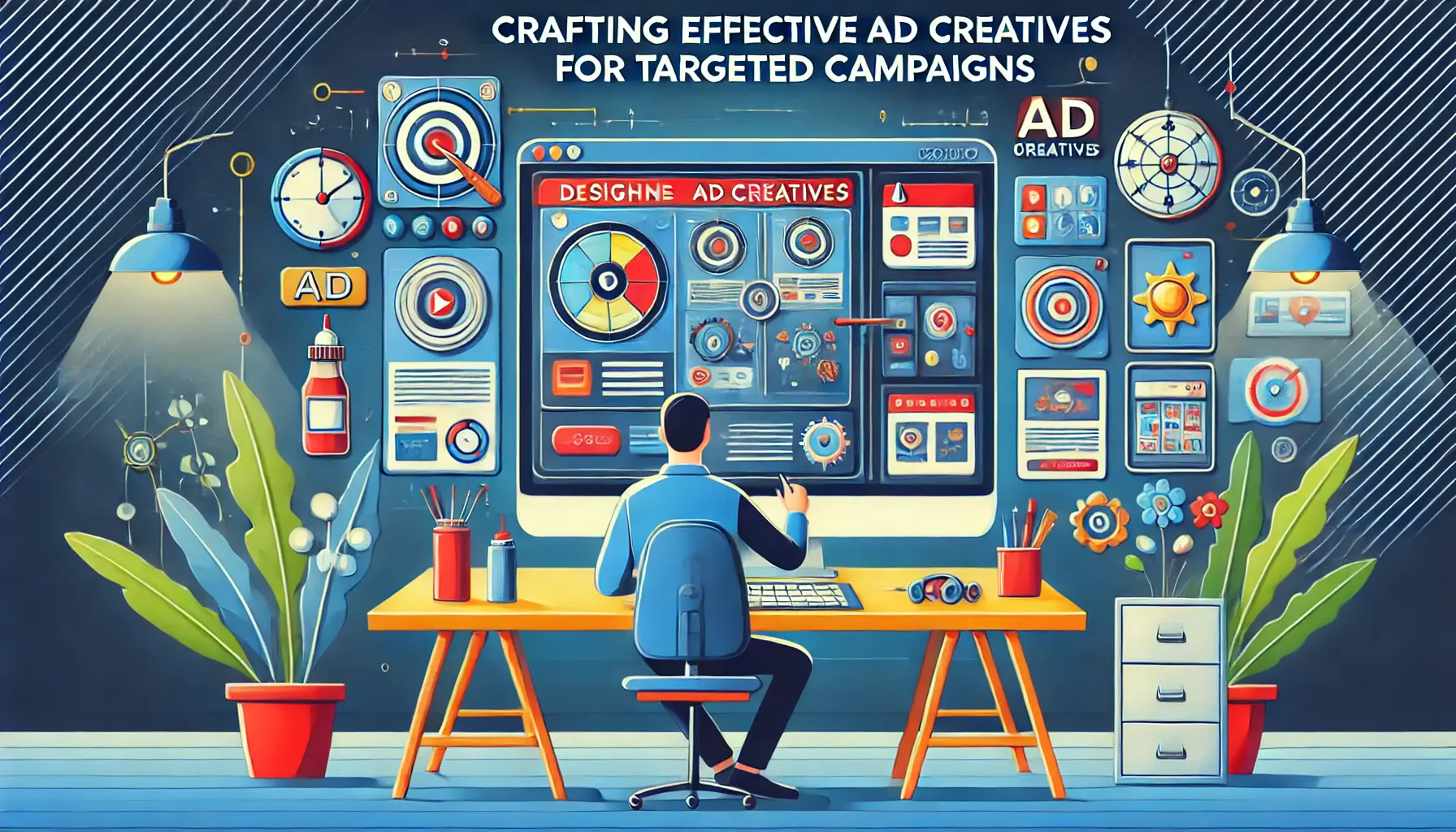
A visual representation of creating effective ad creatives for digital marketing campaigns, emphasizing personalization and design elements.
Crafting Effective Ad Creatives for Targeted Campaigns
Creating compelling ad creatives is essential for the success of your targeted campaigns.
The right combination of persuasive ad copy and engaging visual elements can significantly enhance your Google Ads performance, ensuring your message resonates with your intended audience.

A visual representation of refining ad copy for digital marketing, highlighting best practices like keyword optimization and compelling messaging.
Best Practices for Ad Copy in Targeted Campaigns
Writing effective ad copy involves understanding your audience’s needs and crafting messages that speak directly to them.
Following are some best practices to consider:
- Use Relevant Keywords: Use keywords that are related to what your target audience is searching for. This will increase the relevance of your ad and improve your quality scores.
- Highlight USPs: Clearly communicate what makes your product or service different from others.
- Include a Strong Call-to-Action (CTA): Encourage users to take the desired action, such as “Shop Now” or “Learn More.”
- Maintain Clarity and Conciseness: Ensure your message is straightforward and easy to understand, avoiding jargon or complex language.
By adhering to these practices, your ad copy can effectively capture attention and drive user engagement.
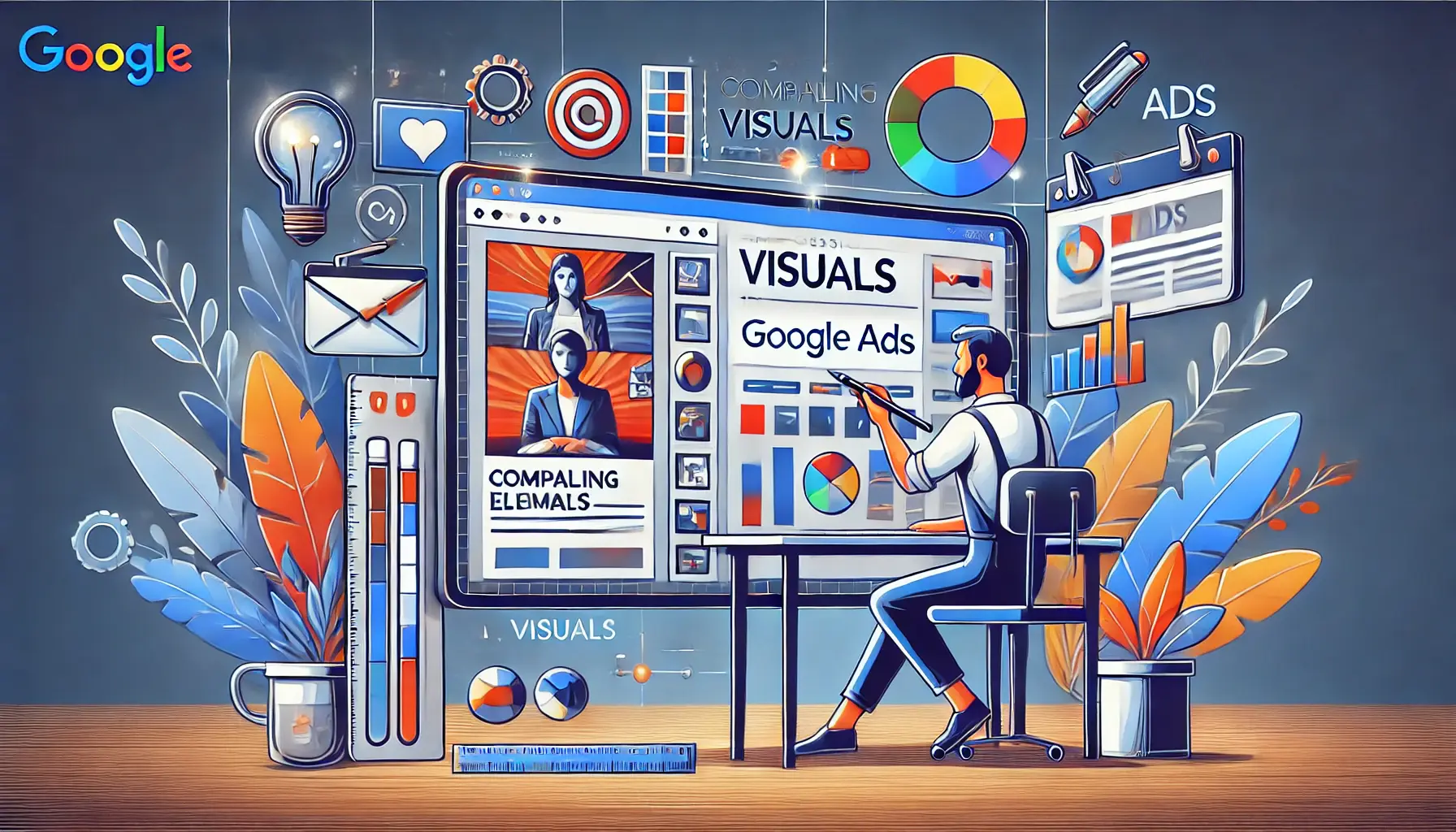
A visual representation of how compelling visuals enhance the effectiveness of Google Ads, focusing on product images, branding, and engaging graphics.
The Importance of Visual Elements in Google Ads
Attention from potential customers can be captured more effectively and for longer using visual components.
Adding a good image or video will definitely make your ad catchier and more memorable.
Consider:
- Use High-Quality Images: Ensure visuals are clear and relevant to your product or service in order to enhance credibility.
- Apply Consistent Branding: Ensure consistency in colors, font, and logos to fortify brand recognition.
- Leverage Video Content: Utilize short, engaging videos to convey complex messages quickly and effectively.
Incorporating compelling visuals can significantly boost user engagement and improve ad performance.

A visual representation of A/B testing, showing two ad versions side by side with performance metrics to improve ad performance.
A/B Testing to Improve Ad Performance
Continuous testing is vital to optimize your ad creatives.
A/B testing allows you to compare different versions of your ads to determine which performs better.
Focus on elements such as:
- Headlines: Experiment with various headlines to see which captures more attention.
- CTAs: Test different calls-to-action to identify which prompts higher engagement.
- Visuals: Compare the effectiveness of different images or videos.
Regular A/B testing enables data-driven decisions, leading to continuous improvement in your targeted campaigns.
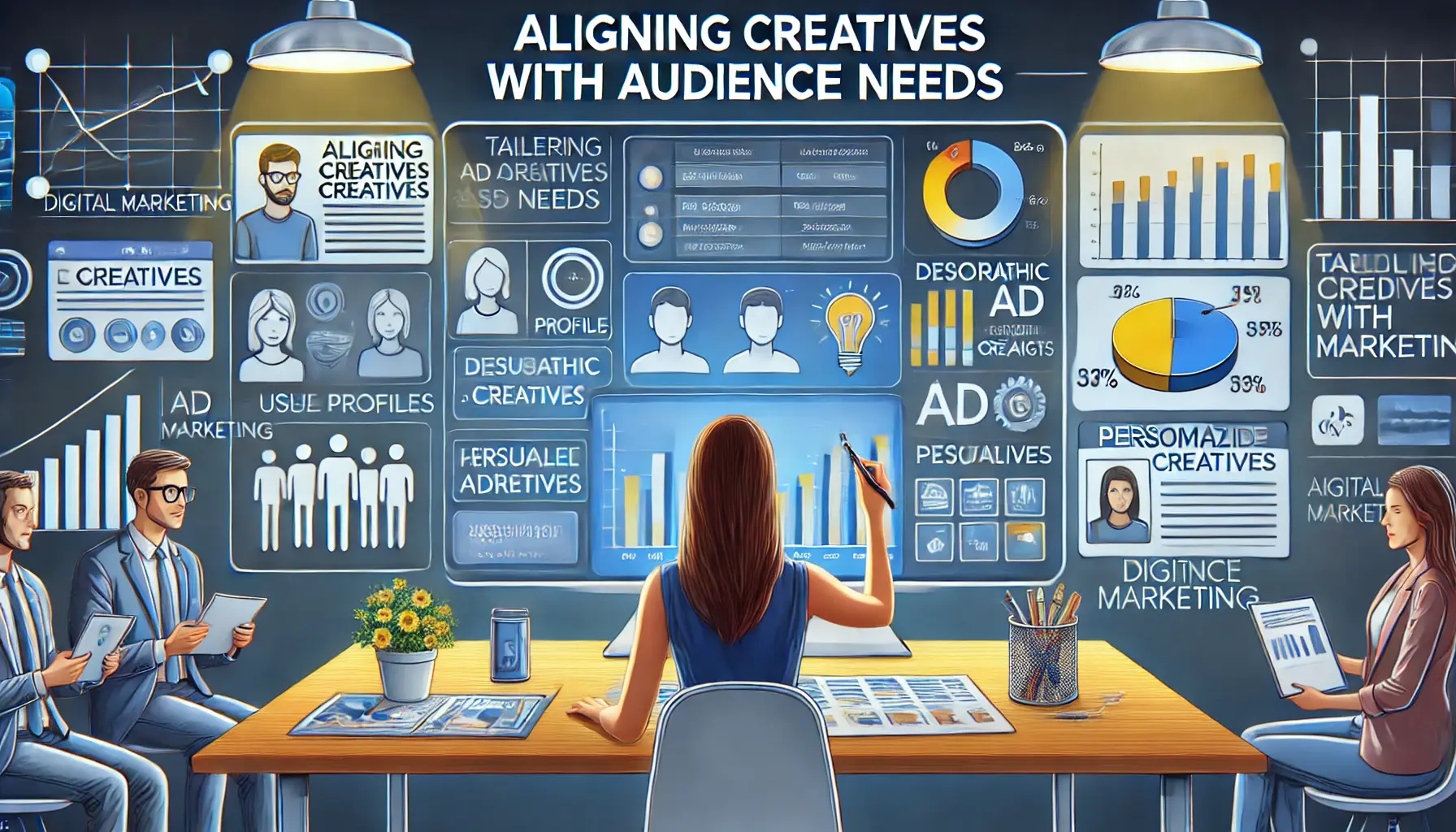
A visual representation of aligning ad creatives with the specific needs and preferences of different audience segments.
Aligning Creatives with Audience Needs
First and foremost, understand to whom your ads will be shown.
Tailor your ad creatives to address the pain points and preferences of your target audience specifically.
Consider the following strategies:
- Audience Segmentation: Segment your audiences into demographics, interests, or behaviors to create more personalized ads.
- Personalization: Dynamic content helps deliver a personalized message that resonates with individual users.
- Relevance: Ensure that your ad content aligns with the current needs and desires of your target audience.
By aligning your ad creatives with your audience’s needs, you enhance the relevance and effectiveness of your targeted campaigns.
Creating effective ad creatives is an ongoing, dynamic process.
By focusing on compelling ad copy, engaging visuals, continuous testing, and audience alignment, you can create targeted campaigns that drive meaningful results.
In the next section, we will go through how to optimize your campaigns for even better outcomes.
Compelling ad creatives drive engagement. Focus on ad copy that resonates and visuals that capture attention.
- Use keywords and unique selling points in ad copy.
- Maintain branding consistency in visuals.
- A/B test headlines, visuals, and CTAs to optimize performance.
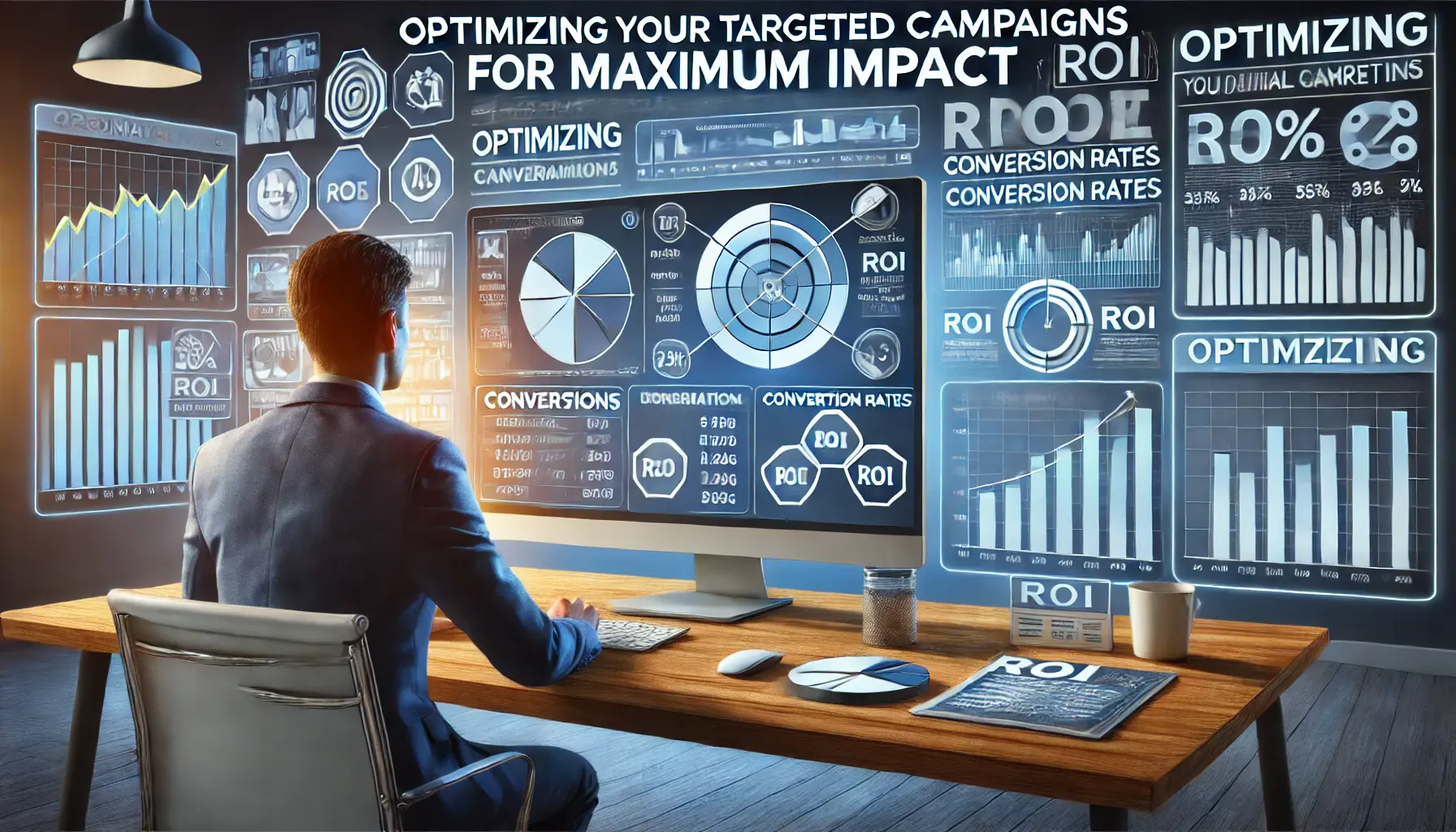
A visual representation of optimizing targeted campaigns, focusing on refining strategies and improving ad performance.
Optimizing Your Targeted Campaigns for Maximum Impact
After crafting compelling ad creatives, the next crucial step is to optimize your targeted campaigns to ensure they reach their full potential.
Effective optimization involves continuous monitoring and strategic adjustments to enhance performance and achieve your marketing objectives.

A visual representation of implementing smart bidding strategies, focusing on automated options like Target CPA and Target ROAS.
Implementing Smart Bidding Strategies
Automated bidding strategies, like Smart BiddingAn automated bidding system in Google Ads using machine learning to optimize conversions., can considerably improve how well your campaigns perform.
These strategies use machine learning to set bids that are likely to maximize conversions or conversion value in every auction.
Examples include:
- Target CPA (Cost Per Acquisition): Sets bids to help get as many conversions as possible at the target cost per action you set.
- Target ROAS (Return on Ad Spend): Bids to maximize conversion value while achieving your target return on ad spend.
- Maximize Conversions: Automatically sets bids to help you get the most conversions within your budget.
- Maximize Conversion Value: Sets bids to maximize the total conversion value of your campaign within your specified budget.
This helps in better utilization of your budget and the overall efficiency of the campaign.

A visual representation of audience segmentation, highlighting the process of dividing users into groups based on demographics and interests for targeted ad campaigns.
Utilizing Audience Segmentation
Dividing your audience into distinct segments based on demographics, interests, or behaviors enables more personalized ad delivery.
This approach ensures that your messages resonate with specific groups, increasing engagement and conversion rates.
- Demographic Segmentation: Tailor ads to specific age groups, genders, or household incomes.
- Interest Segmentation: Target users based on their hobbies, preferences, or lifestyle choices.
- Behavioral Segmentation: Reach audiences based on their past interactions with your website or similar products.
Effective audience segmentation enhances the relevance of your ads, leading to better performance and higher return on investment.

A visual representation of refining keyword targeting for digital marketing, showing the use of search queries and keyword match types.
Refining Keyword Targeting
Regularly reviewing and updating your keyword list is essential to maintain the effectiveness of your targeted campaigns.
Focus on high-performing keywords and eliminate those that are underperforming.
- Negative Keywords: Exclude terms irrelevant to your offerings to prevent wasted spend.
- Long-Tail Keywords: Target more specific phrases that indicate higher intent and often have less competition.
- Match Types: Utilize broad, phrase, and exact match types strategically to control which searches trigger your ads.
This ensures that your ads reach the most relevant audience, improving click-through rates and conversion rates.

A visual representation of improving ad extensions in Google Ads, with various extension types and performance data on the screen.
Improving Ad Extensions
Ad extensions add additional information to your ad and increase its visibility when it appears on Google.
They make the ad more attractive for potential customers.
Examples include:
- Sitelink Extensions: Direct users to specific pages on your website.
- Callout Extensions: Highlight unique selling points or offers.
- Structured Snippets: Tell users more about your product or service.
- Call Extensions: Let users call your business directly from the ad.
Ad extensions can enhance the visibility of your ad and give users added incentive to click, increasing click-through rates.
Through the implementation of these optimization strategies, the performance of targeted campaigns will be enhanced, thereby effectively reaching and engaging desired audiences.
Next, we will discuss how to measure and analyze campaign success to guide future marketing efforts.
Campaign optimization is a continuous process that includes smart bidding strategies, audience segmentation, and keyword refinement.
- Use Smart Bidding like Target CPA or ROAS.
- Segment audiences based on behavior or demographics.
- Incorporate ad extensions for better visibility.

A visual representation of adapting to emerging trends in targeted campaigns, focusing on new technologies and evolving marketing strategies.
Adapting to Emerging Trends in Targeted Campaigns
In the ever-evolving landscape of digital marketing, staying abreast of emerging trends is crucial for the success of your targeted campaigns.
Embracing new technologies and adapting to changing user behaviors can significantly enhance your campaign’s effectiveness.

A visual representation of leveraging AI-powered tools for ad targeting and campaign optimization using machine learning and data analysis.
Leveraging AI-Powered Tools
Artificial Intelligence (AI) has proved to be an innovative game-changer in digital marketing, offering tools that grant precision in targeted campaigns.
AI-driven platforms analyze enormous amounts of data to locate patterns and predict user behavior, enabling more personalized ad delivery.
- Automated Content Generation: Employ AI to create personalized ad content that resonates with specific audience segments.
- Enhanced Targeting: Leverage AI algorithms to refine audience segmentation and improve ad relevance.
Integrating AI-powered tools into your strategy can lead to more efficient and impactful targeted campaigns.

A visual representation of adapting marketing strategies based on changes in user behavior, focusing on data analysis and real-time insights.
Adapting to Changes in User Behavior
User behaviors and preferences are continually shifting, influenced by technological advancements and societal trends.
To maintain the effectiveness of your targeted campaigns, it’s essential to monitor these changes and adapt accordingly.
- Behavioral Analysis: Regularly analyze user interactions with your ads and website to identify emerging patterns.
- Responsive Design: Ensure your ad content is optimized for various devices and platforms to meet users where they are.
- Personalization: Tailor your messaging to align with the current interests and needs of your audience.
By staying attuned to user behavior, you can adjust your campaigns to maintain relevance and engagement.

A visual representation of navigating privacy regulations in digital marketing, focusing on compliance and data security.
Navigating Privacy Regulations
Data privacy laws are becoming increasingly stringent, impacting how marketers collect and use consumer information.
Compliance with these regulations is not only a legal obligation but also essential for maintaining consumer trust.
- Understand Applicable Laws: Keep yourself updated on data protection laws such as GDPR and CCPA that affect your business operations.
- Implement Consent Mechanisms: Collect and process user data only after obtaining clear and affirmative consent from users.
Following privacy regulations keeps your organization safe from legal implications and helps build trust with your audience.
By embracing AI technologies, staying responsive to user behavior changes, and diligently adhering to privacy laws, you can adapt your targeted campaigns to the dynamic digital marketing environment and ensure sustained success and relevance.
Stay ahead by leveraging AI tools, monitoring behavioral shifts, and adhering to privacy regulations.
- Utilize AI for automated content and audience targeting.
- Adapt campaigns to align with changing user preferences.
- Comply with GDPR and CCPA for user trust and data protection.
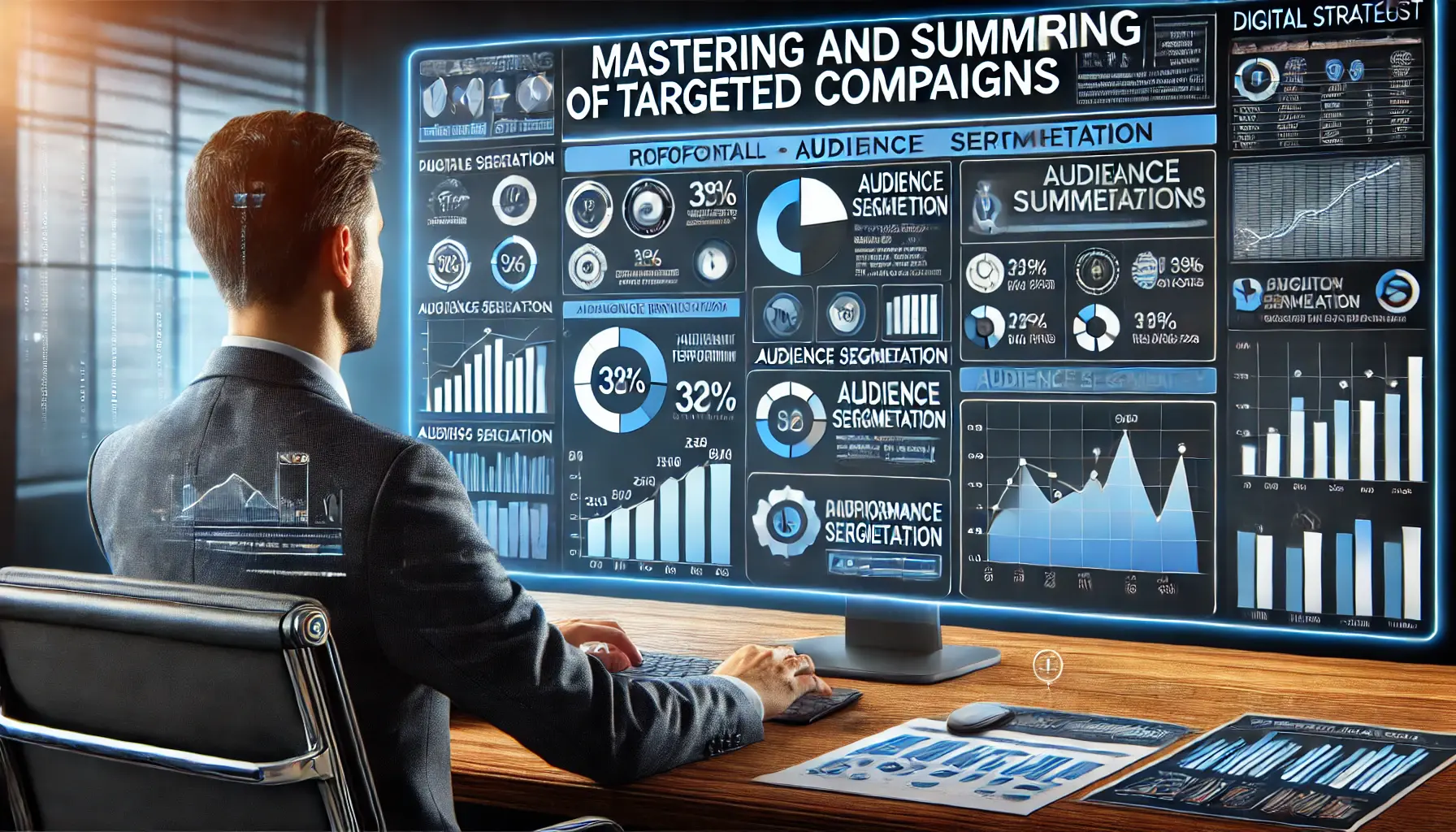
A visual representation of mastering targeted campaigns, focusing on data analysis, performance metrics, and campaign optimization.
Mastering the Art of Targeted Campaigns: A Summary
Targeted campaigns are essential in today’s competitive digital marketing landscape.
By focusing on specific audience segments and utilizing data-driven insights, marketers can craft campaigns that resonate deeply with their intended audiences.
This article has covered comprehensive strategies and best practices to help you develop impactful targeted campaigns.

A visual representation of reviewing key takeaways from targeted campaigns, focusing on performance metrics like conversion rates and ROI.
Key Takeaways from Developing Targeted Campaigns
To master the art of creating and maintaining targeted campaigns, attention to every detail from conceptualization to execution is imperative.
Here’s a quick rundown of the key takeaways:
- Understanding the Basics: Clearly define your target audience and identify their preferences, behaviors, and needs. This foundational knowledge forms the backbone of any campaign.
- Leveraging Google Ads: Utilize the power of Google Ads by focusing on demographic targeting, interest-based targeting, and location-specific targeting to ensure precision and effectiveness in your campaigns.
- Creative Development: Create ad copy and visuals that address the needs of your audience. Use elements like A/B testing and consistent branding to refine your creatives.
- Optimizing Campaigns: Leverage smart bidding strategies, audience segmentation, and keyword targeting for better performance. Incorporate ad extensions for enhanced visibility.
- Adapting to Trends: Use AI-powered tools, monitor user behavior, and stay compliant with evolving privacy regulations to remain relevant in the ever-changing marketing landscape.

A visual representation of building sustainable success with targeted campaigns, emphasizing long-term growth and performance metrics.
Building Sustainable Success with Targeted Campaigns
Targeted campaigns are not a one-time effort; they require continuous learning, adaptation, and optimization.
For sustained success, consider the following:
- Monitor Campaign Performance: Consistently track metrics such as CTR, conversion rates, and ROAS to identify areas for improvement and optimize accordingly.
- Stay Updated: Stay informed about the latest marketing trends and technological advancements to make your campaign strategies more robust.
- Focus on Customer Trust: Prioritize compliance with privacy laws and maintain transparency in data usage to build long-term relationships with your audience.
By implementing these practices, you can maximize the impact of your targeted campaigns and ensure they drive measurable business outcomes.

A visual representation of concluding thoughts in digital marketing, focusing on final campaign analysis and strategic decision-making.
Final Thoughts
Mastering targeted campaigns is a journey that involves strategic planning, creative execution, and continuous optimization.
Whether leveraging Google Ads, crafting compelling creatives, or adapting to new trends, every step counts in building impactful campaigns.
As the digital marketing landscape evolves, staying informed and flexible will be your greatest assets.
By following the strategies laid out in this article, you can create campaigns that not only reach the right audiences but also foster meaningful engagement for long-term success.
The power of targeted campaigns lies in their ability to connect, engage, and convert—so make sure to use this tool to its fullest potential.
Successful targeted campaigns demand a combination of precision, creativity, and adaptation to trends.
- Define target audience and leverage Google Ads tools.
- Focus on compelling creatives and continuous testing.
- Optimize campaigns with data-driven decisions.
- Stay updated on digital marketing trends.
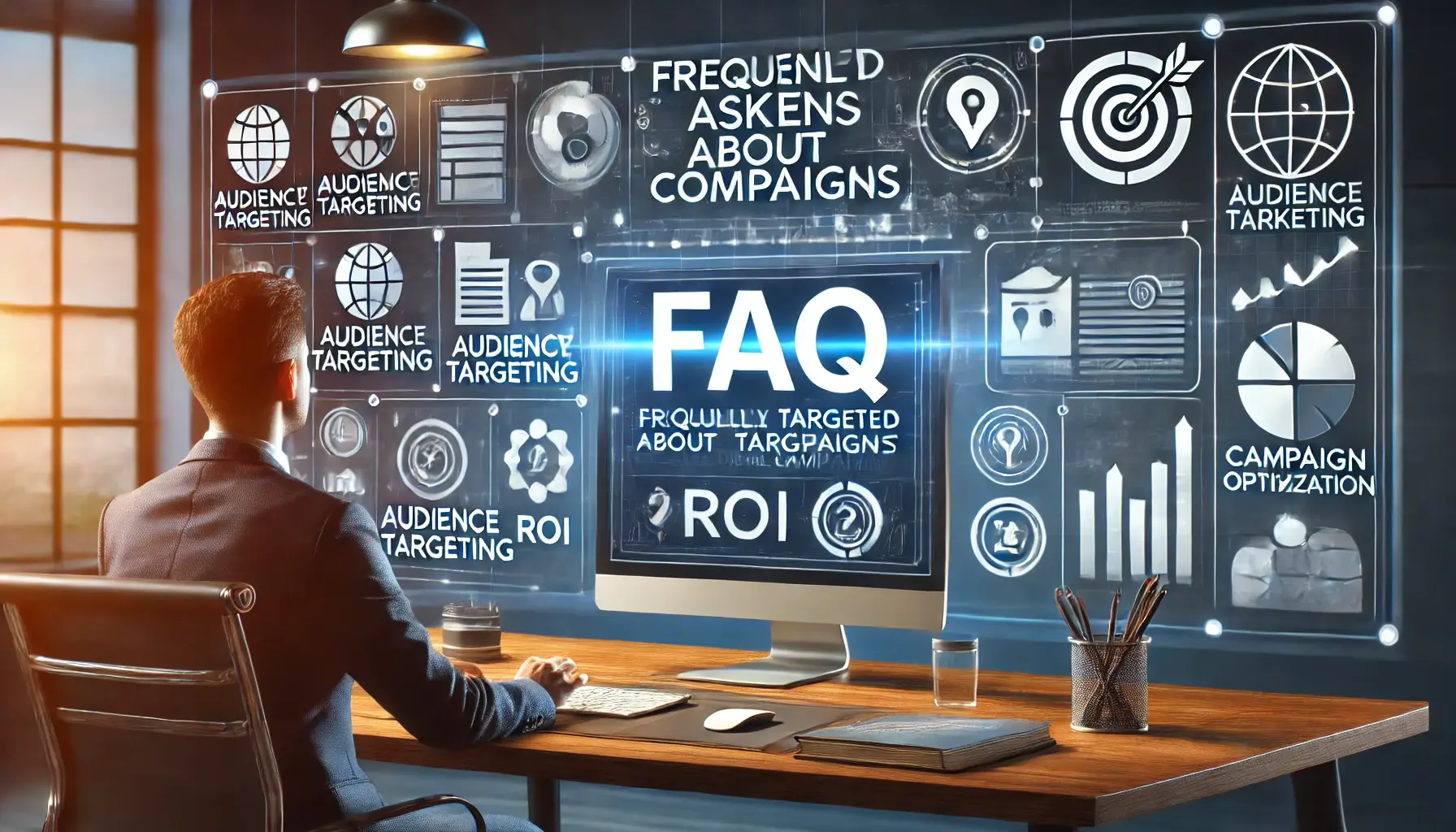
A visual representation of addressing frequently asked questions about targeted campaigns, with a focus on common queries in digital marketing.
Your campaigns can be managed by an agency specialized in Google Ads, check out our service page.
Frequently Asked Questions About Targeted Campaigns
Understanding targeted campaigns is crucial for effective digital marketing.
Below are some common questions and concise answers to help clarify key concepts.
Targeted campaigns offer precise audience reach, improved engagement, higher conversion rates, and efficient budget utilization, ensuring your marketing efforts resonate with the right people.
Analyze your customer base to identify demographics, behaviors, and preferences.
Use this data to create detailed buyer personas that reflect your ideal customers.
Market segmentation includes demographics (age, gender), geographic (location), behavioral (buying habits), and psychographic (interests, values) categories.
Yes, targeted marketing is effective when you research and build your buyer personas and regularly create targeted content tailored to their needs.
Target marketing helps develop effective communication strategies to attract more leads and increase customer loyalty by addressing specific audience needs.
Utilize Google Ads’ tools like demographic targeting, interest-based targeting, and location-specific targeting to ensure your campaigns reach the intended audience effectively.
A/B testing allows you to compare different ad versions to determine which performs better, enabling data-driven decisions for continuous campaign improvement.
Compliance with data privacy laws is essential to maintain consumer trust and avoid legal issues, directly influencing how you collect and use consumer information.
Audience segmentation enables personalized ad delivery, ensuring messages resonate with specific groups, leading to higher engagement and conversion rates.


